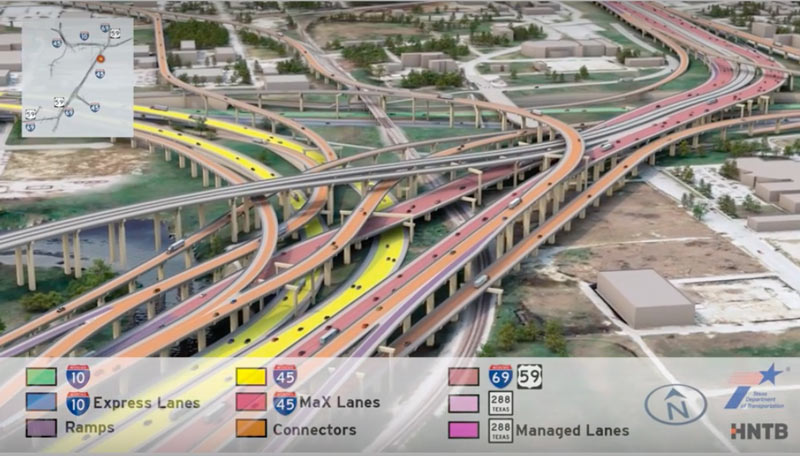They’re fun to read, and my heart is with them, but we all know how this works.
The I-45 project is likely to do irreversible damage to our city’s finances and ecology. It will reduce the city’s tax base by eliminating existing businesses that affect 25,000 jobs. This includes approximately 20 city blocks in EaDo, a thriving entertainment and residential neighborhood with massive unmet potential. It will wipe out homes, churches and businesses in neighborhoods including Independence Heights, Near Northside and Fifth Ward, repeating the sins of the past by building highways through historical African American and Latino neighborhoods.
This project represents a major transfer of wealth from the city to the suburbs, trading actual city of Houston homes, land, and businesses for the promise of faster trips through Houston. Researchers say that promise won’t pan out long-term: As Houston’s own history with I-10’s expansion demonstrates, adding lanes doesn’t improve freeway congestion for long.
Adding insult to those injuries, the expanded freeway will likely lead to further development on our shrinking forest and prairie lands north of Houston. That open land currently buffers neighborhoods downstream from flooding, and it filters rainwater, improving our area’s water quality.
I have been part of many of the “Make I-45 Better” discussions, hosted with the idea that, if TxDOT would come to the table with resources and an openness to new design approaches, the damage caused by the project could be offset by the benefits it could create. I no longer think this trade-off makes sense.
To move people without the putting an undue burden on the neighborhoods along the I-45 corridor, we need a better regional approach.
What might be possible if we work together on a different vision? Imagine if the state legislature allowed TxDOT act like a true department of transportation — not just a highway department. Imagine leaders from TxDOT, METRO, the city of Houston and others sitting together and figuring out how we can best connect people to the abundance Houston has to offer. Imagine a safer, sustainable and more equitable Houston, where people had choices to avoid congestion. Imagine if we implemented projects that strengthen our city instead of undermine its competitiveness.
That approach shouldn’t be limited to freeways. Given the funds dedicated to I-45 and other roadways, METRO’s METRONext plans, Harris County flood bond projects and Harvey Recovery funds, tens of billions of dollars will soon be spent on infrastructure to remake our city. We need a vision for how all this investment fits together.
See here and here for some previous point/counterpoint, and read the whole thing for the author’s suggestions. I basically agree with everything he says, but it’s all for academic interest, because there’s no mechanism to make any of what he says happen. The truth of the matter is that what we should have been doing is spending the last decade or two working to change the laws on how transportation dollars are allocated by the Lege. That wouldn’t have worked, of course, because there’s very little interest in the Republican legislature for anything other than road building, but at least it would have had a chance of success. It’s still a worthwhile goal, even if it’s too late to do anything about I-45. Lobbying Congress to appropriate more money to transit grants would also be useful. None of this is pretty or easy, but it’s the best we can do.


I agree with all of this! Destroying the thriving bar and restaurant scene in Eado is bad for residents of Houston’s East End. We already have so many things to contend with. Eliminating cross-through traffic on Polk is another problem. And if we do have a hurricane, don’t we need multiple ways out of the city?